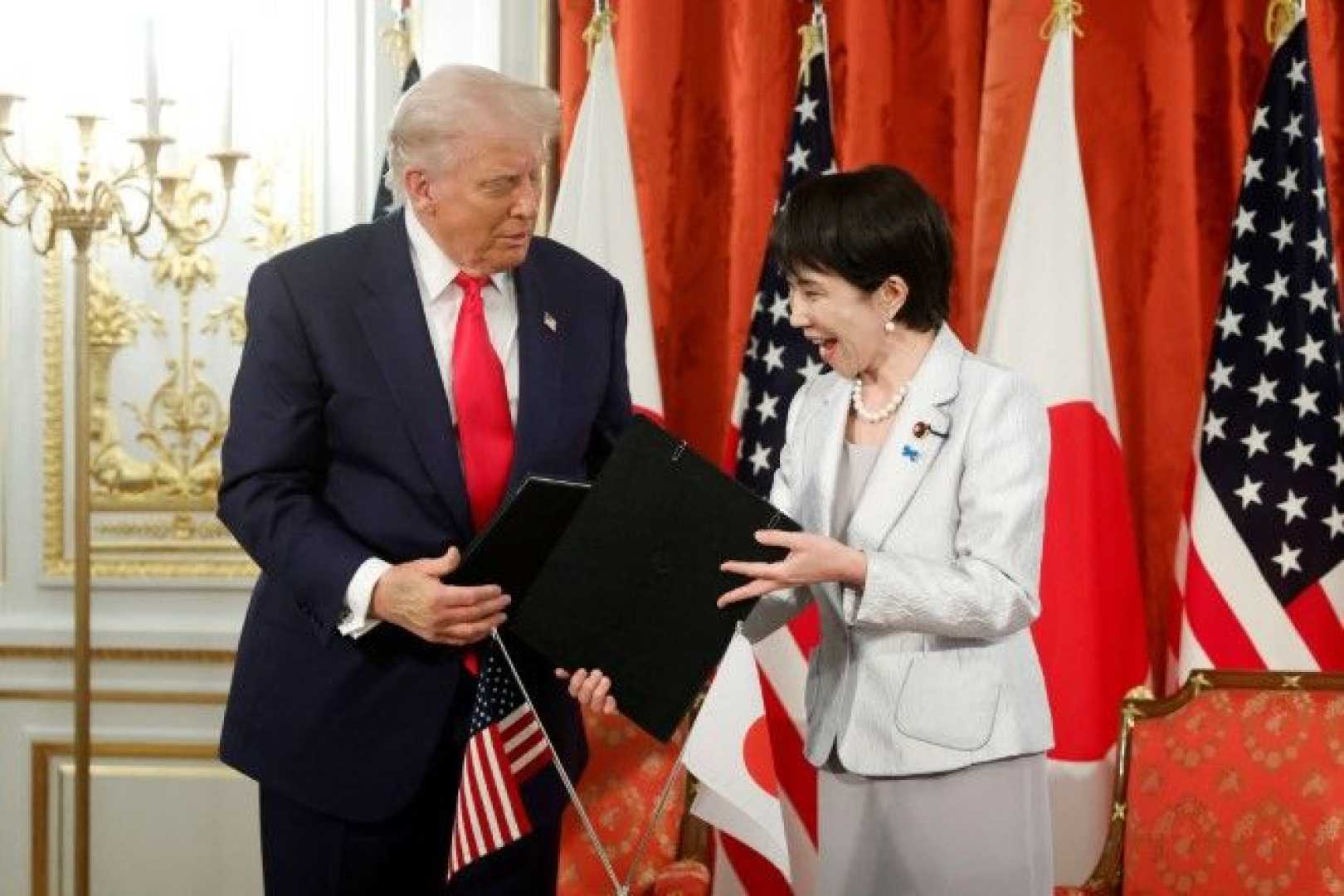Politics
Takaichi’s Charm Offensive: A Test of Japan-U.S. Relations

TOKYO (AP) — Japan‘s newly elected Prime Minister Sanae Takaichi faced a pivotal moment on Tuesday as she met with U.S. President Donald Trump. Their meeting comes during Trump’s first second-term visit to Asia, where he is engaging with key allies, reinforcing economic and security ties.
The meeting at Akasaka Palace was marked by Trump’s praise for Takaichi, whom he called a respected leader and a friend of former Prime Minister Shinzo Abe. In his remarks, he stated, “This will be a relationship that will be stronger than ever before,” citing Abe as an influential figure in U.S.-Japan relations.
Takaichi has framed this meeting as essential for her survival as Prime Minister. With her party controlling a minority government and a shaky electoral history, solidifying her image as a capable leader is crucial. “A successful meeting with Trump is a must for Takaichi’s survival as Prime Minister,” Tokuko Shironitta, managing director at the Asia Group, shared.
Despite her limited diplomatic experience, Takaichi is positioning herself closely alongside Trump, hoping to appeal to his interests with symbolic gestures like the potential purchase of American Ford F-150 trucks. This move aims to address trade imbalances that have long been a point of contention between the two nations.
In addition to discussing automotive trade, Takaichi is expected to propose a shipbuilding deal and advance discussions on increasing Japanese imports of U.S. soybeans and gas. “She has to convince the President that Japan is a critical partner in making America great again,” says Stephen Nagy of the International Christian University.
While Takaichi’s congratulatory remarks about Trump reflect a strategy of flattery, her predecessors faced challenges in securing U.S. support, leading experts to caution that mere compliments may not suffice in building a stable relationship. Jeff Kingston, an Asian studies professor, noted that Takaichi needs to bolster her image while navigating complex economic negotiations with the U.S.
On the geopolitical front, Takaichi intends to address concerns over China‘s military expansion, emphasizing Japan’s need for a stronger defense posture. Following the meeting with Trump, she reiterated Japan’s commitment to meet its defense spending goals—a sign of alignment with Trump’s insistence on increased military investment from allies.
However, challenges remain as Takaichi navigates domestic pressures to renegotiate aspects of economic agreements with the U.S. Experts warn that while she may aim to present a strong front to Trump, there is an expectation from Japanese businesses for clarity and a balanced relationship.
As Takaichi charmed Trump, she gifted him a golf bag and proposed that Japan honor America’s upcoming 250th anniversary with cherry trees and fireworks. The symbolic gestures signify a hope for cultivating goodwill and a robust partnership during Trump’s visit, which continues through Asia with significant implications for trade and security dynamics.
In response to Trump’s trade policies, Takaichi must balance the needs of Japan with maintaining a strategic alliance with the U.S. “It’s a tightrope she has to walk,” warns Kingston. The stakes are high, but her proactive approach to reinforce ties with a key ally could dictate the future trajectory of Japan-U.S. relations.












